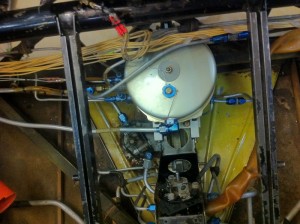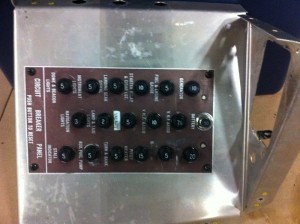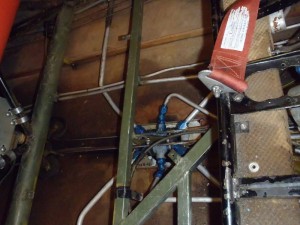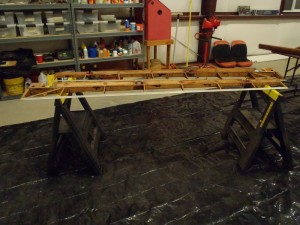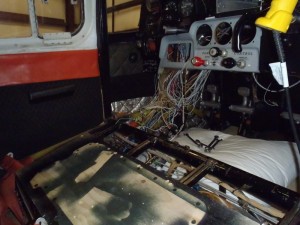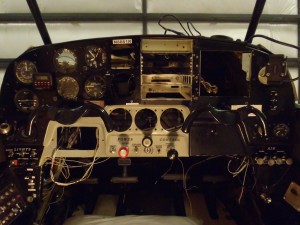Ok, I’ve been lame again. Perhaps busy is a better description.
June 1st, I got my instrument rating in Alamosa, CO. The flight was long and painful (it was 90+ degrees and the Liberty XL2 is not good with two people and high density altitude). We started with the ILS 2 approach from the DME arc, which would cover both the precision approach and the DME arc requirements. Flew the arc perfectly, despite some monster up and down drafts. Turned onto final approach, went to verify the approach signal and got silence. The ILS was out, which would be a problem, as a precision approach is a requirement for the checkride. We switched to a partial panel GPS 2 approach to cover the partial panel requirement, and I nailed that approach, went missed, and setup for the VOR-A approach, to cover the circling approach requirement. While we were climbing up to 10,000′ to start the approach, Jim (my examiner) called the airport manager on unicom and he agreed to go try to reset the ILS (it’s old and if it gets wet, apparently it sometimes trips a breaker). While on the outbound portion of the procedure turn, we caught a strong downdraft that had me at Vx (best angle of climb speed) and still losing altitude. I got out of that, made the turn, got caught in an updraft, was nose down, power back, and climbing. I didn’t really want to give that altitude away, so delayed my descent until I was sure I wouldn’t catch the previously mentioned downdraft. I crossed the VOR at about 9800′, despite a minimum crossing altitude of 9300′. I then made a stable, 800 fpm descent, hit minimum descent altitude before the missed approach point, and made a perfect pattern to land. We went missed and headed to the east to do some unusual attitude recoveries, during which we got news the ILS was back up and running. The examiner also expressed concern that the crossing of the VOR high was a failure situation, but agreed to continue the exam to completion. I then flew a very solid ILS approach to decision height and made a descent landing.
The FAA has some interesting rules on exams. The examiner has two options if the examinee does something that results in a failure — he can either continue the exam or end it right there. At the examiner’s discretion, he is only required to retest the part the examinee failed (and not everything else). Also, the retest can occur immediately (it used to be 30 days), as long as the instructor provides instruction in the areas of deficiency. We got on the ground, and had a fairly intense discussion about the situation. My position was that the altitude is a minimum, and as long as I made a stable descent, I was ok. His position was that it’s an assigned altitude to guarantee you make a stable descent. I was at 9800′ at 3:36 from the MAP and MDA is 8020. So I had to lose 1780′ in about 3.5 minutes (approach was flown at 90 knots), which is just a bit under 510 fpm. Recommended stable descent altitude is 800 fpm. Now, if I was a jet, I’d need to be much closer to 9300′ at the VOR, but I also wouldn’t be fighting the turbulence quite so much because I’d be in a properly powered Jet instead of an underpowered XL2.
Long and short, I had two choices. Appeal the examiner’s opinion to the FAA or agree to take the fail and retest. The examiner said he’d retest immediately, so I took that approach. The 45 minute discussion about whether I passed or failed was proof to both the examiner and my instructor that I understood the issues and both were equally unsure about the rules, so we all felt that the remedial training had occured. Anyway, I knew I could nail the approach, so I just took the retest option. Flew a single, picture perfect VOR-A approach to a landing. I was now an instrument pilot.
Yesterday I finally dealt with the fact that I had let my T-41C currency at the aero club expire. Flew down towards Belen, did a practice emergency landing down to 100′ or so at Mid-Valley (can’t actually land there due to aero club rules), did 2 landings at Belen, then went back to the Sunport. Uneventful, beautiful flight. It was good to fly after almost 6 weeks on the ground. When the instructor was filling out my logbook, he asked about the fail. I explained, he looked at the chart, and said “that’s a minimum, not an assigned altitude. You were fine as long as you made a stable approach.” Another instructor hanging around the office said the same thing. So I feel better that I was right after all.
As of yesterday, I have 197.4 hours total time, an instrument rating, and T-41C currency. I’m thinking about getting checked out in either the C-182 or C-182RG (retractable gear), as they’re a bit more roomy for taking people up (but also a bit more expensive). The RG would require a complex endorsement, which would take 5 hours or so of time.
 I started running all the data wires for the EDM-900 (there’s a crapload of them). It looks like everything is going to fit, although I’m still not entirely sure how I’m going to setup the fuel flow sensor. I need to get some smaller hose clamps to secure the oil pressure and fuel pressure sensors and put some more holes in the firewall.
I started running all the data wires for the EDM-900 (there’s a crapload of them). It looks like everything is going to fit, although I’m still not entirely sure how I’m going to setup the fuel flow sensor. I need to get some smaller hose clamps to secure the oil pressure and fuel pressure sensors and put some more holes in the firewall.